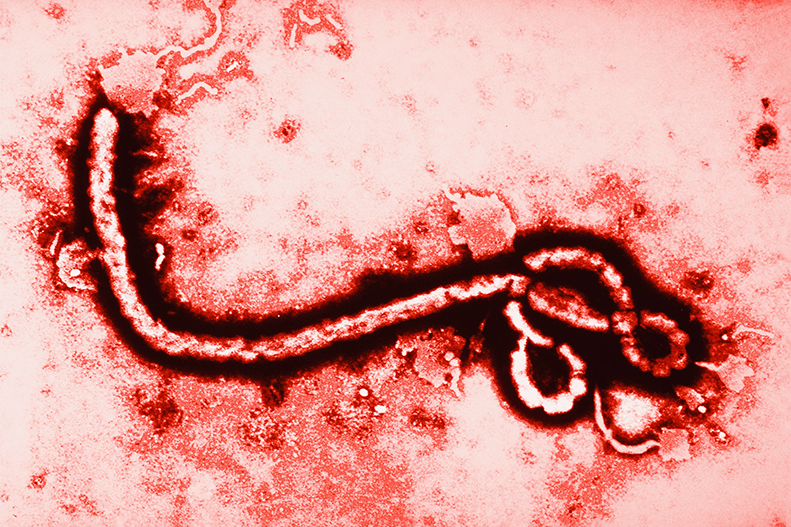In recent weeks, the global medical community has focused its attention on West Africa, the source of the most recent Ebola outbreak. The origin of this outbreak can be traced to the nations of Guinea and Liberia, and with a fatality rate of up to 65 percent in this outbreak, the disease has become a concern around the world.
The Centers for Disease Control and Prevention (CDC) issued a travel alert discouraging non-essential personnel from visiting the affected region until the disease can be more appropriately managed. The current strain has infected more than 1,000 people while the death toll extends beyond 800.
The first documented outbreak was in Sudan in 1976, and the current outbreak strain is the strongest and most dangerous. The table below, prepared by the World Health Organization (WHO), details the more recent outbreaks, their sources, and statistics of those affected.
| Year | Country | Ebolavirus species | Cases | Deaths | Case fatality |
|
2012 |
Democratic Republic of Congo | Bundibugyo |
57 |
29 |
51% |
|
2012 |
Uganda | Sudan |
57% |
||
|
2012 |
Uganda | Sudan |
24 |
17 |
71% |
|
2011 |
Uganda | Sudan |
100% |
||
|
2008 |
Democratic Republic of Congo | Zaire |
32 |
14 |
44% |
|
2007 |
Uganda | Bundibugyo |
149 |
37 |
25% |
|
2007 |
Democratic Republic of Congo | Zaire |
264 |
187 |
71% |
|
2005 |
Congo | Zaire |
12 |
10 |
83% |
|
2004 |
Sudan | Sudan |
17 |
41% |
|
Never Miss a Beat!
Subscribe to Our HealthBeat Newsletter!
Thank you for subscribing!
You can now select the specific newsletters you'd like to receive.
You are already subscribed.
Subscribe to more newsletters in our email preference center.
Sorry, an error occurred. Please try again later.
Get Healthy Tips Sent to Your Phone!
What Is Ebola?
According to the WHO, Ebola is “a severe acute viral illness” that causes a severe infection of multiple organ systems. In some cases bleeding inside and outside of the body can ensue—placing Ebola, short for Ebola virus disease (EVD), in the category of viral hemorrhagic fevers. Other viral hemorrhagic fevers include Lassa Fever, Yellow Fever, Marburg, and Crimean-Congo Hemorrhagic Fever.
Ebola has a very high fatality rate that can reach 90 percent in some instances.
Ebola symptoms
The WHO says that symptoms of Ebola can appear suddenly and include:
In time, these primary symptoms can progress to include:
- Vomiting
- Diarrhea
- Impaired kidney and liver functioning
- Internal and external bleeding
The incubation period for Ebola is anywhere from two to 21 days (three weeks), and laboratory testing is used to confirm a diagnosis of the disease.
Ebola transmission
Ebola or EVD, can appear in humans following contact with infected animals such as, fruit bats, monkeys, pigs, apes, and others. Humans can transfer the disease to each other through direct contact with blood and other bodily fluids or objects such as needles that may contain infectious materials. Ebola is not spread through the air like a cold or the flu, but those infected can transmit the disease for as long as blood and secretions contain the virus, and the disease remains present and can spread to others even after death.
Amesh Adalja, MD, an infectious disease physician at UPMC, believes that the United States and other nations with advanced heath care systems should be aware of Ebola but not worry about the spread of it in the general population. Ordinary infection control procedures can isolate the disease before it is able to infect citizens who have not previously been exposed to the infected blood or bodily fluids.
Ebola cures or vaccinations
There is no cure or vaccine for Ebola; however, research and testing continues and a promising vaccine and treatment is on the horizon. Treatments for Ebola include supportive therapies such as intravenous (IV) fluids, fever control, and ICU-level care which can manage symptoms of the disease.
Special thanks to these sources
About UPMC
Headquartered in Pittsburgh, UPMC is a world-renowned health care provider and insurer. We operate 40 hospitals and 800 doctors’ offices and outpatient centers, with locations throughout Pennsylvania, Maryland, New York, West Virginia, and internationally. We employ 4,900 physicians, and we are leaders in clinical care, groundbreaking research, and treatment breakthroughs. U.S. News & World Report consistently ranks UPMC Presbyterian Shadyside as one of the nation’s best hospitals in many specialties and ranks UPMC Children’s Hospital of Pittsburgh on its Honor Roll of America’s Best Children’s Hospitals. We are dedicated to providing Life Changing Medicine to our communities.
